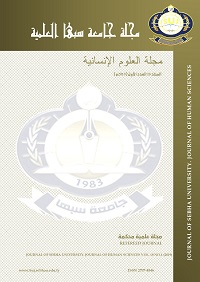The role of intertextuality in producing meaning according to Ibn Al-Roumi (Text Dialogue)
Main Article Content
Abstract
Studying the issue of intertextuality in Ibn al-Rumi's poetry, and tracing its parts and sources that mean the existence of a trace of previous texts are attempts to find out the parts, sources, and mechanisms on which the principle of intertextuality is based. This is what this study deals with. It is by focusing on one of the mechanisms of intertextuality. It can be defined as a dialogue and how it operates as a law imposing its authority On the texts of Ibn Rumi. The poet, that is the writer, loads his language with the weight of feelings, emotions, and metaphors, which are generated from the womb of the poetic moment, without any restrictions or controls. This does not mean that it originates from a vacuum, but rather as a result of being affected by the gathering of manuscripts surrounding the present text, to produce an innovative new text as a result. Here, the dialogue law is realized, to be an external dialogue with manuscripts surrounding the present text, or to be a self-dialogue with the texts of the poet himself through his return to his previous texts. Thus, he follows, in both dialogues (external and subjective), the path of opposition or analogy. According to his creative capabilities in dealing with the components of language, and the areas of contextual expression, it provides for the form of a complex sentence, And according to the artistic image that covers that expression in an artistic dress.
Downloads
Article Details
Plagiarism policy
Sebha University Journal respects intellectual property and aims to protect the original work of authors applying for publication. In general, the laws of the magazine are inconsistent with scientific articles that contain stolen materials and are not bound by the standards of quality, research and innovation. Applicants for publication to the journal must adhere to ethical standards and refrain from plagiarism in any way. In the event that any plagiarism or scientific theft of an article submitted for publication is found, the journal will contact the author to provide their interpretation within two weeks of its date, after which it will be referred to the relevant committees formed for this purpose to take strict measures. about that. In general, the journal’s license allows the citation of the content published on its website and the download of all files.




